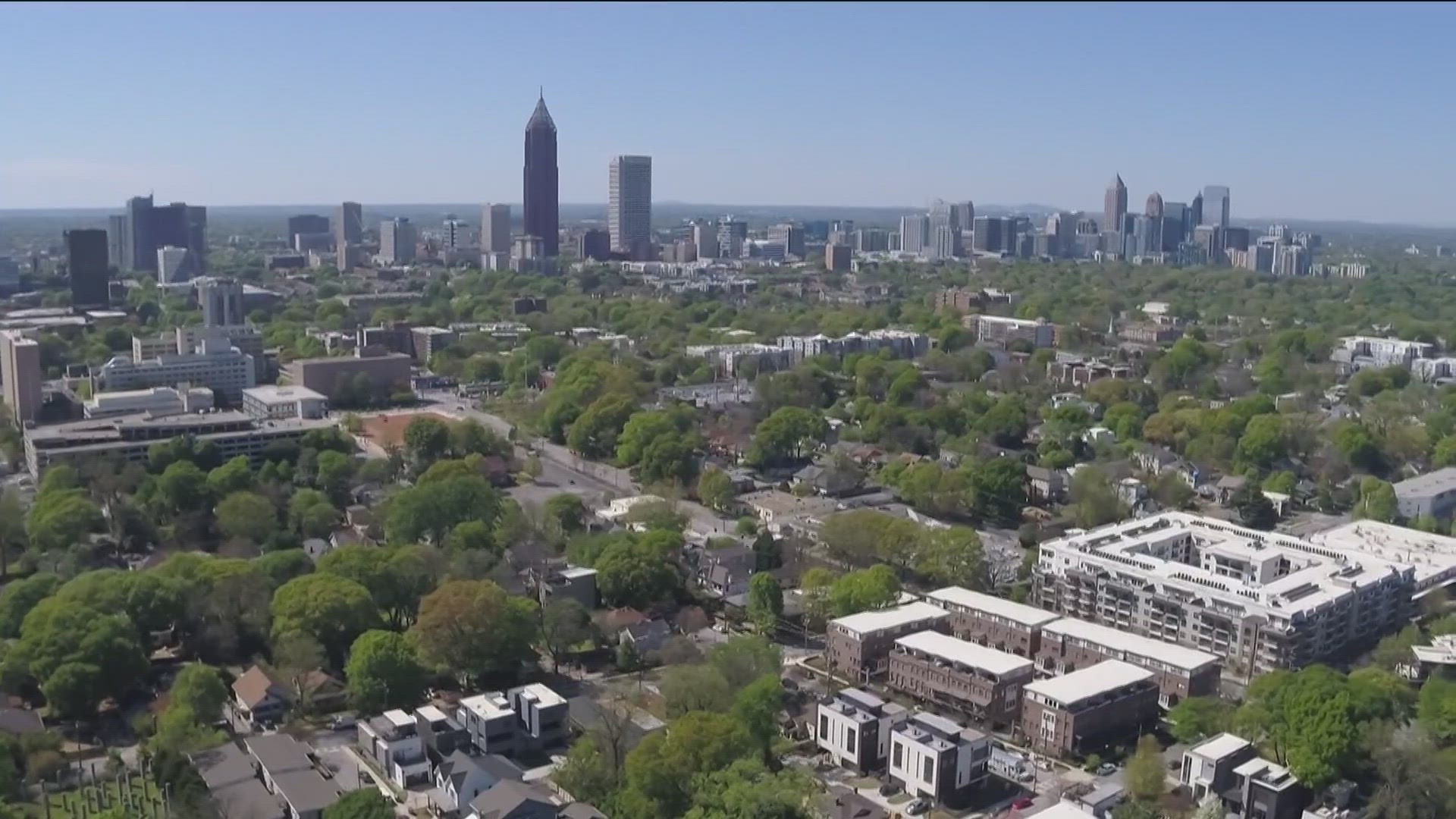ATHENS, Ga. — Climate change is no longer a threat to the future -- it's happening right now, and we can see its impacts on our state. The burdens from a changing climate are not shared equally either.
The Georgia coastline, over 100 miles with some of the richest marshlands left on the east coast, has become increasingly more vulnerable to flooding. Some of that flooding is from hurricanes, others from heavy rainstorms. Erosion and coastal development and urbanization can make tidal floods worse. Floods will become more common in a warmer climate.
In Atlanta, extreme heat and flooding are the city's two biggest points of vulnerability from a warming climate.
"We know that temperatures are increasing, heat wave frequency and intensity is increasing, and the intensity of the rain storms are higher, which leads to more flooding," Dr. Mashall Shepherd said.
Shepherd is the director of the atmospheric sciences program at the University of Georgia and has done extensive research on how heat is affecting parts of Atlanta city disproportionately.
This week at UGA, more than 500 individuals gathered together to talk about solutions and what a resilient Georgia looks like going forward.
Dr. Patricia Yager, director of the Georgia Climate Project and professor of marine sciences at UGA, organized the Georgia Climate Conference. It's called a conference, but it's so much more than that.
“This is a community meeting to have the conversations that we have to have to figure out what does a resilient Georgia look like in terms of climate," Yager said. "We have to plan for what’s going to happen and we want to make sure everyone’s at the table – whether they’re business, or communities, rural communities, urban communities, academics that have information that other communities need.”
Seeking solutions
It was a unique opportunity for different sectors of our state -- each with its own climate problems and ideas for solutions -- to gather together and share and collaborate.
For years, research has been done to identify some of the climate goals that would best align with our state. The organization Drawdown Georgia identified 20 high-impact solutions that will get Georgia on the road to a significant emissions reduction.
Some solutions are more tangible and easier fixes. In Atlanta, some of these simpler solutions could help combat the urban heat island effect.
“There are some climate solutions that we know work. Just increasing the amount of vegetation will cool urban heat islands. Changing the color of surfaces from dark pavement to light pavement reflects more of the sun’s energy but even things you may not think about like traffic patterns and changing traffic patterns," Shepherd added.
But other solutions will take more planning, time, and much more funding.
As collaboration and conversations can lead to new ideas and sharing of ideas on how to implement change for a more resilient future, we’re at a pivotal moment for the state with financial incentives for change.
Funding solutions
According to the White House, $180 million is coming to the state of Georgia from the Inflation Reduction Act for clean power generation and storage between now and 2030. It's a huge opportunity for power companies and coops to invest in sustainable, cleaner energy solutions.
There is federal funding available to companies and governments, big and small, from several government agencies. But to get that money for investing in the future, those entities must apply for government grants. This grant-writing process can be grueling and for smaller rural communities, it's hard to find the resources to go through this process.
Those granted funds through the federal programs must also meet qualifications set aside in the Justice 40 executive order, which states that 40 percent of the overall benefits of certain federal investments flow to disadvantaged communities that are marginalized, underserved, and overburdened by pollution.
At a smaller-scale, direct impact level, there is also a large amount of money set aside for future tax credits for homeowners looking to reduce their climate footprints. These include rebates covering 50-100% of the cost of installing new electric appliances for low and moderate-income households in the state. Appliance rebates will vary from water heaters and heat pumps to stoves and ovens. The proposed money will also cover 30% of the cost of installing solar panels and battery storage systems.
What's important to note is that these upgrades are only good if a home is energy efficient. This was a big topic in one of the breakout sessions at the conference. Heat pumps are super-efficient and an emerging technology that should be utilized in a greener future. But if a home has poor insulation, old single-pane windows, or faulty ductwork or roofs, it's not energy efficient. The heat pump can be up to 50% less effective.
The Biden Administration says that rebates will also be set aside for households to make repairs and improvements in single-family and multi-family homes to increase energy efficiency.

